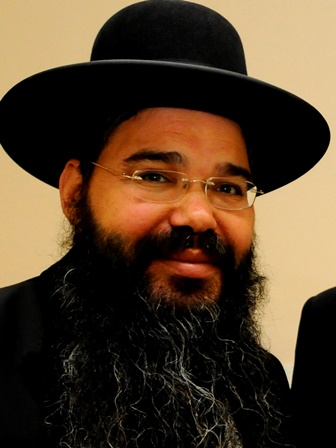Defeating the 'Zvuv'
By: Rav Aharon Friedman
Rosh HaYeshiva
Translated by: Dr. Batya Zuckerman
The Ba’al HaTurim comments on the following passuk in our parasha, “K’tov zot zikaron basefer v’sim b’oznei Yehoshua…,” “Inscribe this in a document as a reminder and read it aloud to Yehoshua…” He points out that the first letters of the words in the passuk spell out “zevuv,” a fly. Just as a fly pursues blood, so did Amalek pursue the Jewish people. His source is in the Tanchuma on Parashat Ki Teitzei, “Rabbi Levi said in the name of Rabbi Shimon ben Chalafta – to what may Amalek be compared? To a fly that excitedly swarms around a wound.” These words require clarification.
We learn in gemara Berachot 61a, “Rav said, the evil inclination may be compared to a fly and it sits between the two entrances to the heart, as it says ‘The flies of the dead make the ointment of the perfumer fetid and putrid.’”
The fly is always found adjacent to death. Its dwelling place is on filth, wounds, blood, and carcasses. It is therefore termed “the fly of the dead.” The fly awaits the cessation of life in the heart in order to enter it and render it rotten. In our context, the two entrances to the heart represent the two sections of Torah – the written and the oral Torah that are inscribed on the tablets (see Shemot 24:12 and midrash there). These two parts of Torah must also be inscribed onto the hearts of man, as it says, “inscribe them on the tablet of your heart.”
The success of Amalek who comes to harm Yisrael, and indeed, the success of all enemies in each generation, stems from the spiritual weakness of the Jewish people and their abandonment of Torah. Chazal, on the passuk “And Amalek came and battled Yisrael in Refidim,” note that the place was thus named became their hands became weak (rafu yedeihem) in their adherence to Torah. This is the allusion in our passuk. “…Zikaron basefer,” “in a document as a reminder,” connotes the written Torah. “…V’sim b’oznei Yehoshua,” “and read it aloud to Yehoshua,” connotes the oral Torah. Yehoshua and Moshe together, with the confluence of the two sections of the Torah, vanquish the fly that is Amalek.
While the version of the Ein Yaakov in Berachot reads, “upon the two entrances to the heart,” the standard text of the gemara reads, “between the two entrances to the heart.” According to this latter version, the weak connection to Torah does not refer to the theoretical and abstract learning of the written Torah. Rather, it relates to connecting Torah to practical life and acting on the day-to-day directives of the oral Torah. Therefore, the hands, specifically, are described as having become weak. The renewed commitment to the written Torah as connected to practical life comes to fruition through inscribing it in a document and reading it aloud to Yehoshua. This also explains the Mishna in Avot that states that a fly was never found in the slaughterhouse of the Beit Hamikdash. In dealing with holy items, there is no divorce of “meat,” and “holiness.” Rather, they are one unified entity.
There is another hint to this idea, the only other place in the Torah where the initials “zevuv” appear. “Semach Zevulun b’tzeitecha v’yisachar b’ohalecha,” “Rejoice, Zevulun, on your journeys and Yisachar in your tents.” Rashi there explains that there was a cooperative relationship between Yisachar and Zevulun by which the light of Yisachar’s Torah would also illuminate the worldly pursuits of Zevulun. This is the way to defeat the fly of death.
“While you, who held fast to Hashem your G-d, are all alive today.”
Shiur ID: 8984
Do you have a comment or question on the shiur?
Comment below and we'll join the discussion
Add your comments:

 (1).jpg)
.jpg)


